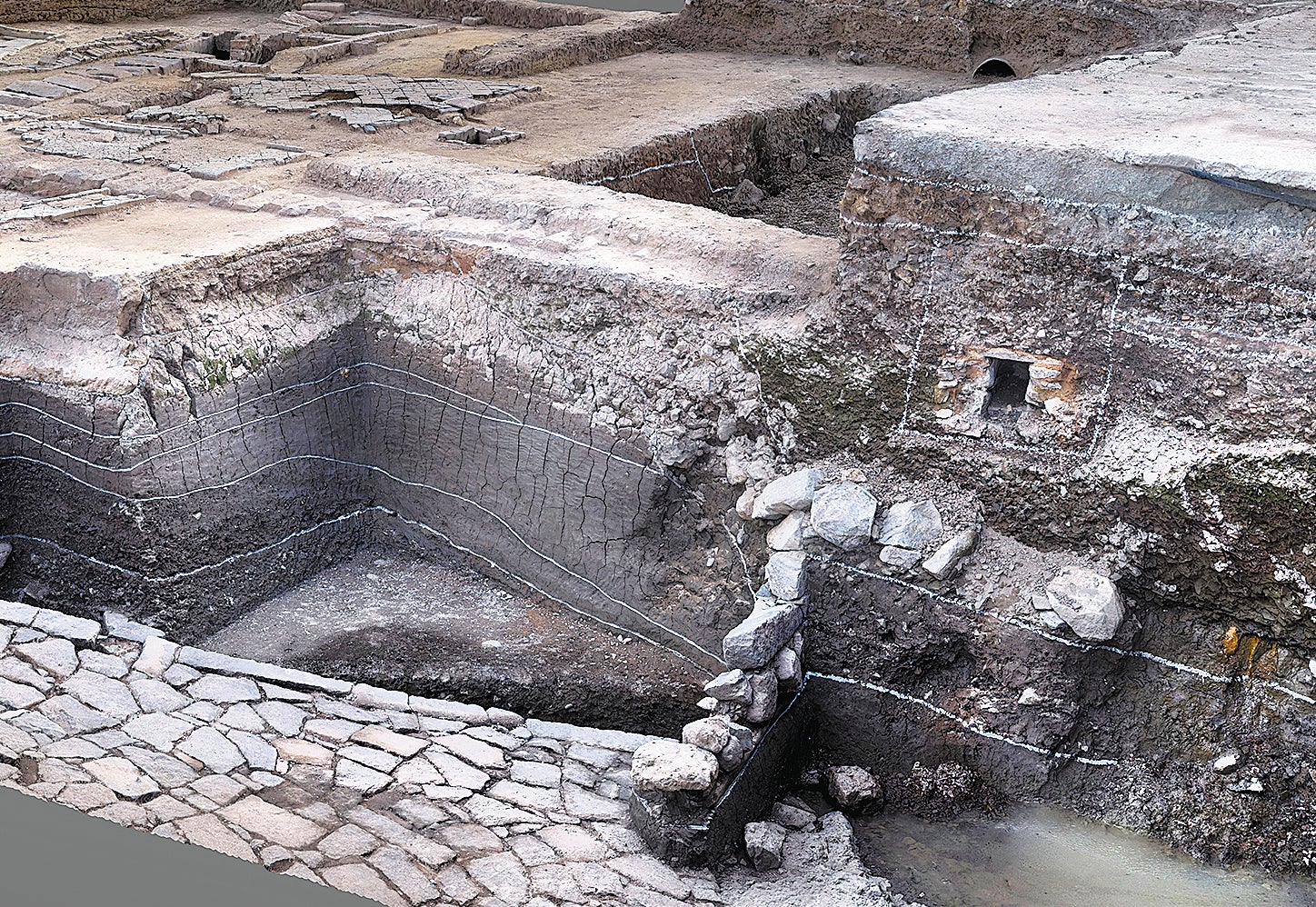Ancient port reveals its secrets
THE ARTICLES ON THESE PAGES ARE PRODUCED BY CHINA DAILY, WHICH TAKES SOLE RESPONSIBILITY FOR THE CONTENTS

A panoramic scroll attributed to the Yuan Dynasty (1271-1368) court painter Wang Zhenpeng, or his disciple, depicts life in the bustling port town of Wenzhou, which lies on the Oujiang River in Zhejiang province.
Wenzhou was Wang’s home, and his scroll shows its busy port, with cargo vessels coming and going, and a variety of people engaged in trade.
Through existing poems and paintings, it has long been possible to trace the past prosperity of ancient Wenzhou port during the Song (960-1279) and Yuan periods, but now a more accurate portrait of that moment in history is emerging from the recent archaeological discovery of the ruins of the city’s ancient port of Shuomen, which was uncovered during construction in 2021.
The archaeological excavation, which is ongoing, began immediately after. The site, which covers about 53,800 square feet, is roughly divided into three parts, namely the wengcheng (the name for a defensive enclosure outside a city gate) area in the west, the water gate area in the east, and the port area near the Oujiang River between the two.
Wenzhou once had intersecting waterways like Venice, and boats were the primary means of transportation. It was built in 323 during the Eastern Jin Dynasty (317-420), of which the layout was said to have been designed by the geomancer Guo Pu (276-324).
According to Wu Xianjun, a researcher with the Wenzhou Institute of Cultural Relics and Archaeology, the water gate site currently being excavated is roughly where one was located to the northeast of the city. It was used to control the flow of water through the city, and locks to do just that have been found, but the gate itself still has not been discovered.
The river port site extends for 1,115ft from east to west, and has docks of various kinds and sizes, stilt houses, wells and shipwrecks, and it forms the most complete ancient port from the Song and Yuan periods unearthed to date, says Liang Yanhua, director of the Wenzhou Institute of Cultural Relics and Archaeology.
Three shipwrecks have been found. The No 1 shipwreck dates to the Southern Song Dynasty (1127-1279), and has been removed from the site for better study and preservation. The No 2 shipwreck, which dates to no later than the Northern Song Dynasty (960-1127), remains mostly buried, and only parts of it have been exposed. And the third one, smaller and more damaged, is kept underground with some parts exposed as well.
According to Liang, the No 1 shipwreck is of a fuchuan, a type of boat also known as a Fujian vessel, one of the four types of ancient wooden Chinese ships, and which was used as a cargo vessel from the Song Dynasty. The wreck contains a coin and bottles from the period.
Wu says that during the Song Dynasty, Wenzhou was one of the most developed shipbuilding centres in China. Historical literature shows that during the late Northern Song period, Wenzhou built 600 ships for the government every year, the most built anywhere in China at the time.
Piles of porcelain items and pieces, lacquerware, glazed artefacts, shells and plant specimens dating from the Northern Song to the early 20th century have been unearthed, with Song and Yuan relics making up the largest proportion.
Around 2,000 complete porcelain items have also been found, as well as some 10 metric tons of fragments, 90 per cent of which were produced at the Longquan kiln in Longquan, Zhejiang.
According to Liang, Longquan celadons accounted for a large part of the porcelain sold overseas from the Southern Song Dynasty until the middle of the Ming Dynasty (1368-1644), and is regarded as the first Chinese commodity to have global appeal before the Age of Exploration.
“The discovery shows that Wenzhou was a major distribution centre, as well as a starting point for the transportation of Longquan celadons to other countries during the Song Dynasty,” says Liang.
Subscribe to Independent Premium to bookmark this article
Want to bookmark your favourite articles and stories to read or reference later? Start your Independent Premium subscription today.